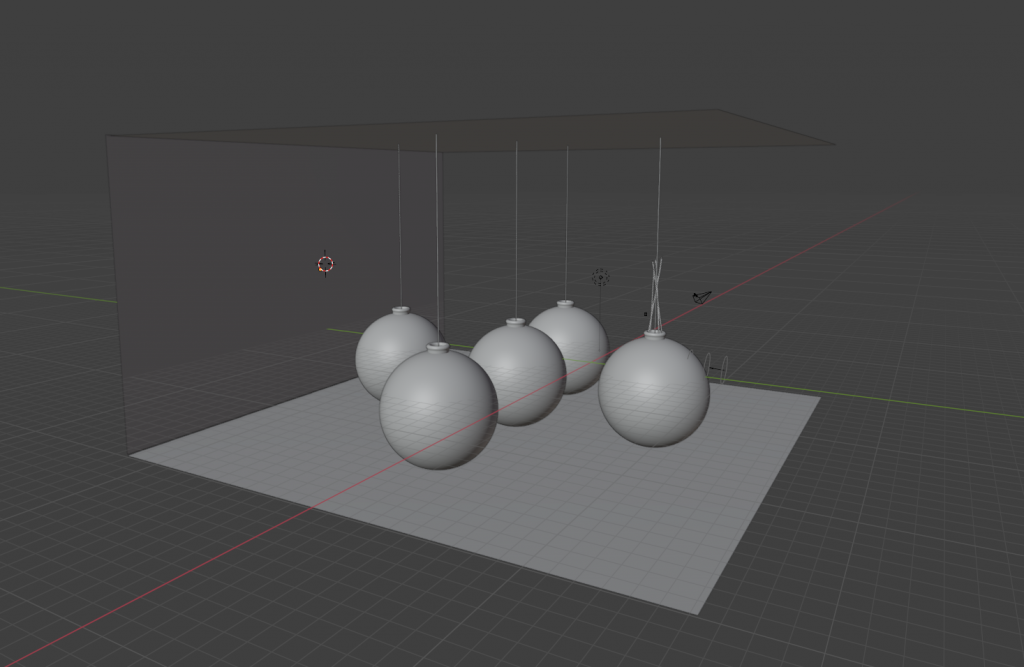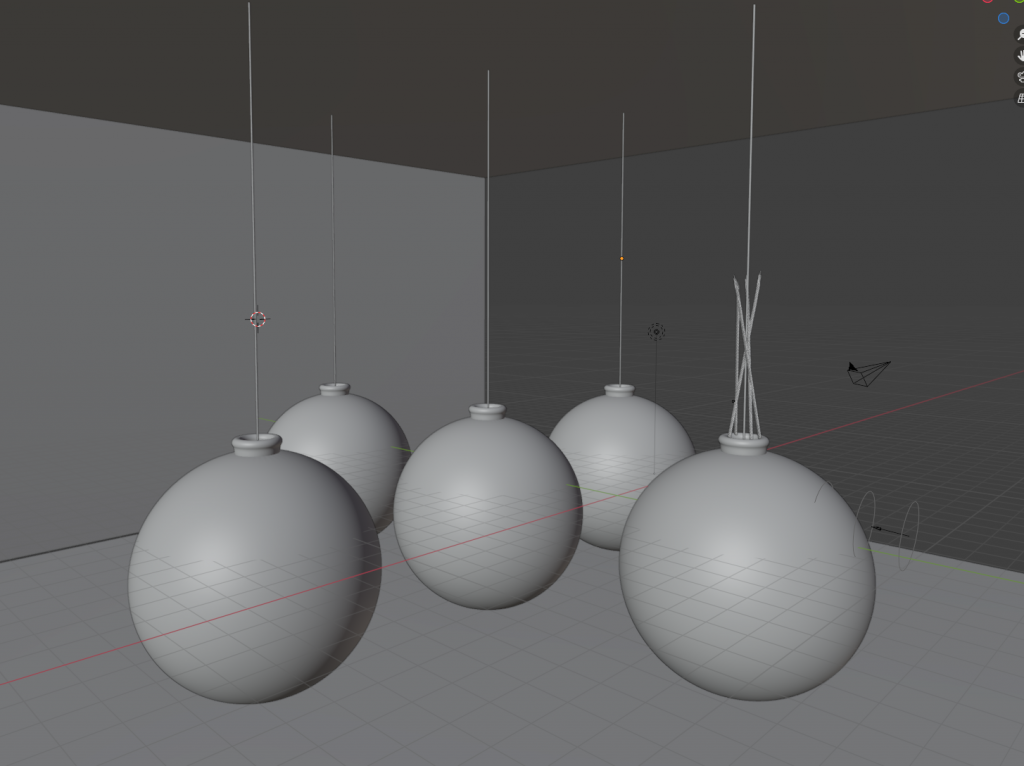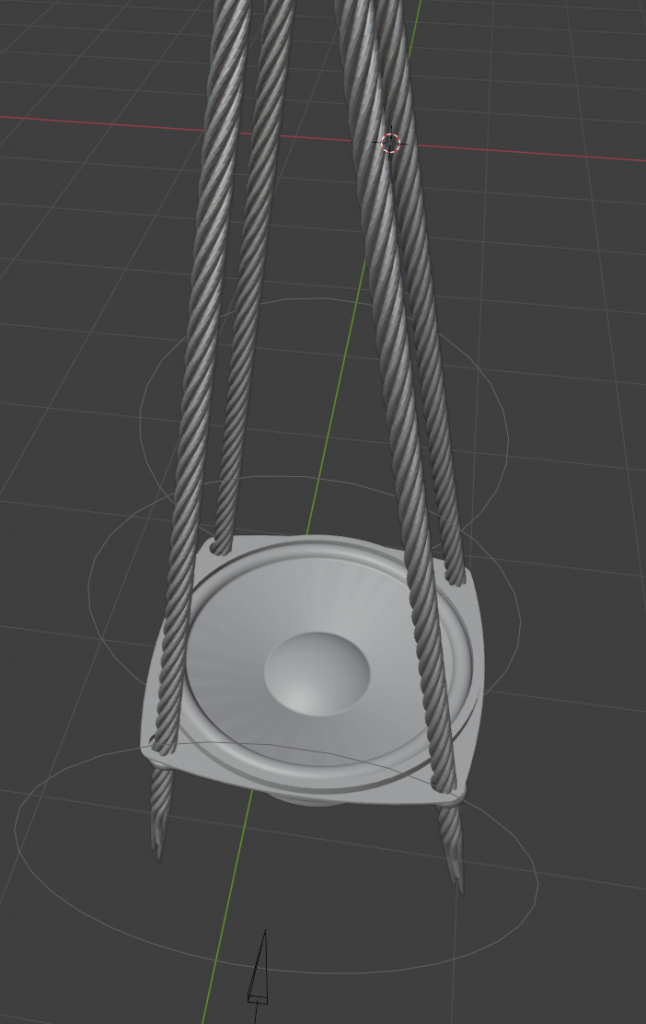


Why Balloons:
Balloons can provide a closed space for sound, symbolizing breathing, emotions, and pressure.
1. Sea of Balloons
Five sets of speakers are suspended from the ceiling, each fitted with a balloon. The balloons are inflated to a maximum diameter of about one meter. Five air pumps simultaneously inflate and deflate the balloons, while the speakers play white noise. The sound changes as the space inside the balloons shifts, simulating the sound of waves through the continuous expansion and contraction of the balloons.
Concept: This piece explores the connection between humans and nature, conveying an environmental message.
Exhibition Format: Installation
Speaker Sound: White noise
Five Balloons: Creates repetition, enhances visual impact, amplifies sound, and controls budget.
Implementation: Five 10W speakers are connected to five amplifiers, receiving audio input from a computer. The speakers are hung from the ceiling with thin steel cables and each placed inside a balloon. Air pumps are connected to the balloons via air hoses, using one-way valves to prevent air leakage. The pumps are linked to an Arduino controller, which is programmed to control the pumps’ timing and frequency.
Technical Challenges and Steps:
- Testing if the speakers can play the intended sound.
- Ensuring the speakers can fit inside the balloons without causing breakage.
- Testing sound effects within the balloons.
- Securing the balloon’s air inlet to prevent leaks.
- Programming the pumps to operate correctly.
- Ensuring balloons can endure repeated inflation and deflation (they shouldn’t be inflated to their maximum to allow leeway).
Materials:
- Five black balloons (if the exhibition space is white)
- Five 12V air pumps (for inflation and deflation)
- Ten hoses (to connect air pump inlets and outlets)
- Ten one-way valves (to connect hoses to the air pump’s inlets and outlets)
- Five relays (to isolate Arduino from high-voltage devices, like pumps, ensuring Arduino circuit safety)
- Five 10W speakers (to be placed inside the balloons)
- Five 15W amplifiers (to boost sound and connect audio input)
- One Arduino microcontroller (to control the pumps)
- One computer (for audio output)
- One 1-to-5 audio adapter
- Five 3-5m audio cables
2. Scream
Five sets of speakers are suspended from the ceiling, each fitted with a balloon. Balloons are inflated until they burst. Five pumps are controlled by different Arduino pins, with random inflation timings (currently estimated at 1-3 minutes depending on pump speed and power) and random intervals between inflation cycles (also estimated at 1-3 minutes). This loop continues until the balloons burst. All five speakers play the same sound, and due to the random timing, the sound should continuously vary. As each balloon bursts, the sound’s volume will increase abruptly, gradually building up as each subsequent balloon bursts, filling the space with sound until all five balloons are gone. Concept: Expresses the human urge to release and scream under pressure.
Exhibition Format: Video (approximately 30 minutes)
Speaker Sound: Currently considering voice recordings about social pressures (words, sentences, noise, etc.—requires further research)
Five Balloons: Creates randomness, enhances visual impact, amplifies sound, and controls budget.
Implementation, Materials, and Technical Challenges: Same as above.
3. Dialogue
Two sets of speakers are suspended from the ceiling, each fitted with a balloon. A helium tank injects helium into the balloons, with mechanical pumps controlling inflation and deflation. When fully inflated, the balloons float in the air. Sound played through the speakers changes in pitch within the helium atmosphere, becoming higher and thinner. After a set period, deflation begins, and the balloons descend. The two balloons alternate inflation and deflation (when Balloon A inflates, Balloon B deflates, and vice versa), simulating a “dialogue” between them.
Concept: Speakers play sounds of self-expression, with each speaker representing a different person’s voice. The sound distortion due to the balloons’ inflation symbolizes the interplay of authenticity and facade in social settings. The balloon acts as a “mask,” intensifying and distorting sounds as pressure builds. This invites viewers to reflect on social pressures, group identity, social adaptation, and the sense of belonging.
Exhibition Format: Installation or Video
Speaker Sound: Recordings of two different people expressing themselves (about five minutes)
Two Balloons: Creates the effect of a dialogue while controlling costs and technical risks.
Implementation: Two speakers are hung from the ceiling, each connected to an amplifier, with separate outputs set in the sound card, and audio played from a computer. A helium tank is connected to the mechanical pumps with a pressure reducer to ensure safe gas flow. A Y-connector splits the gas to feed both balloons. Each pump has two hoses—one for inflation, one for deflation. One-way valves in the hoses prevent leaks. Pumps are controlled by an Arduino, which manages inflation and deflation timing.
Technical Challenges and Steps:
- Testing if the speakers can play the intended sound.
- Ensuring the speakers can fit inside the balloons without causing breakage.
- Testing sound effects within the balloons.
- Securing the balloon’s air inlet to prevent leaks.
- Programming the pumps to operate correctly.
- Ensuring balloons can endure repeated inflation and deflation (avoiding maximum inflation to maintain durability).
- Verifying pump endurance under continuous operation.
Materials:
- Two balloons (black and white)
- One helium tank (to alter sound pitch)
- One gas splitter (to feed two pumps from the helium tank)
- Pressure reducer (to control gas pressure from the helium tank and ensure safe pump/balloon use)
- Two mechanical pumps (to control inflation and deflation)
- Four hoses (to connect pump inlets and outlets)
- Four one-way valves (to connect hoses to the pump’s inlets and outlets)
- Two relays (to isolate Arduino from high-voltage devices, ensuring Arduino circuit safety)
- Two 10W speakers (to be placed inside the balloons)
- Two 15W amplifiers (to boost sound and connect audio input)
- One Arduino microcontroller (to control the pumps)
- One computer (for audio output)
- Two 3-5m audio cables
- One sound card with at least two outputs
